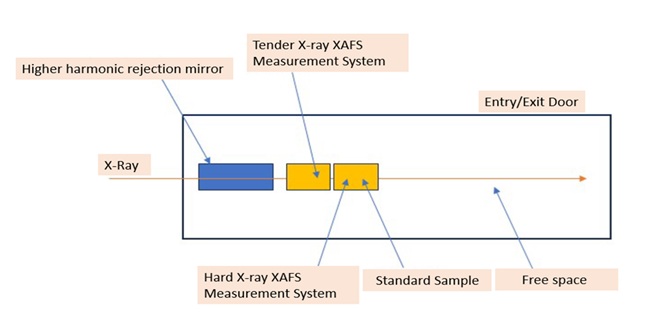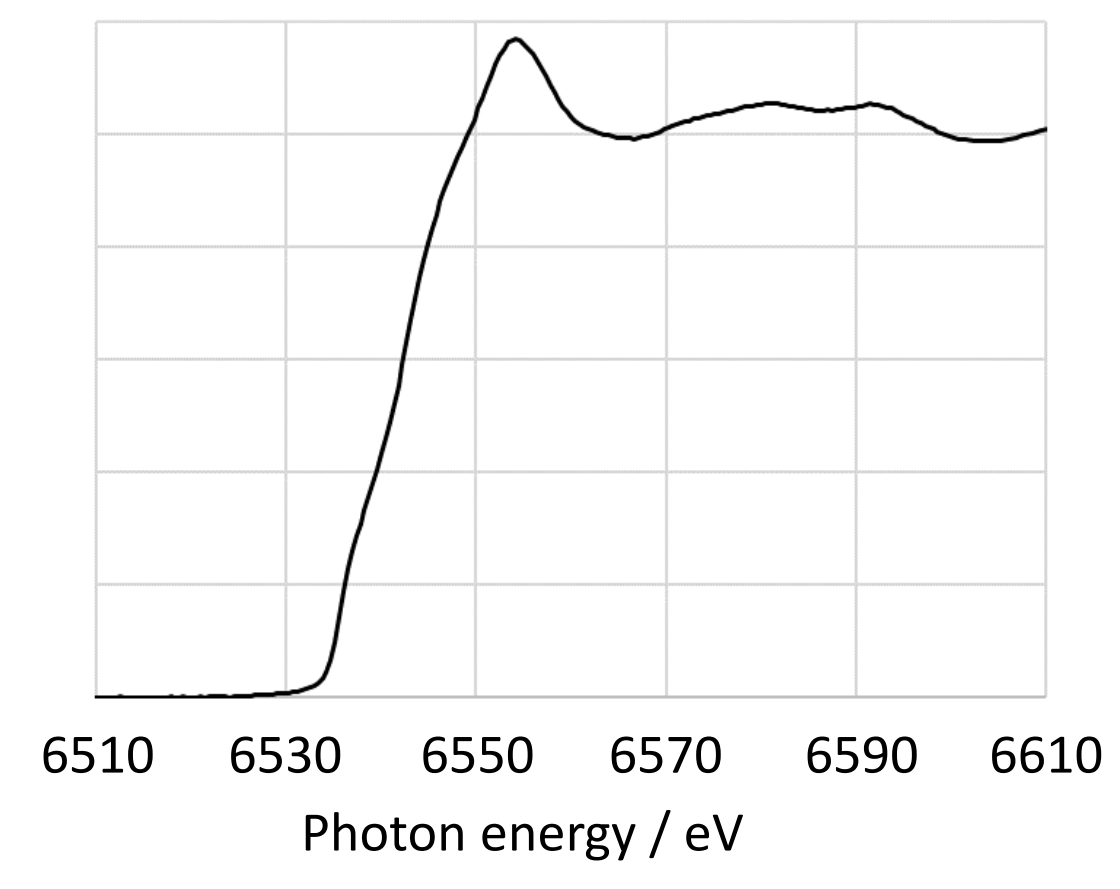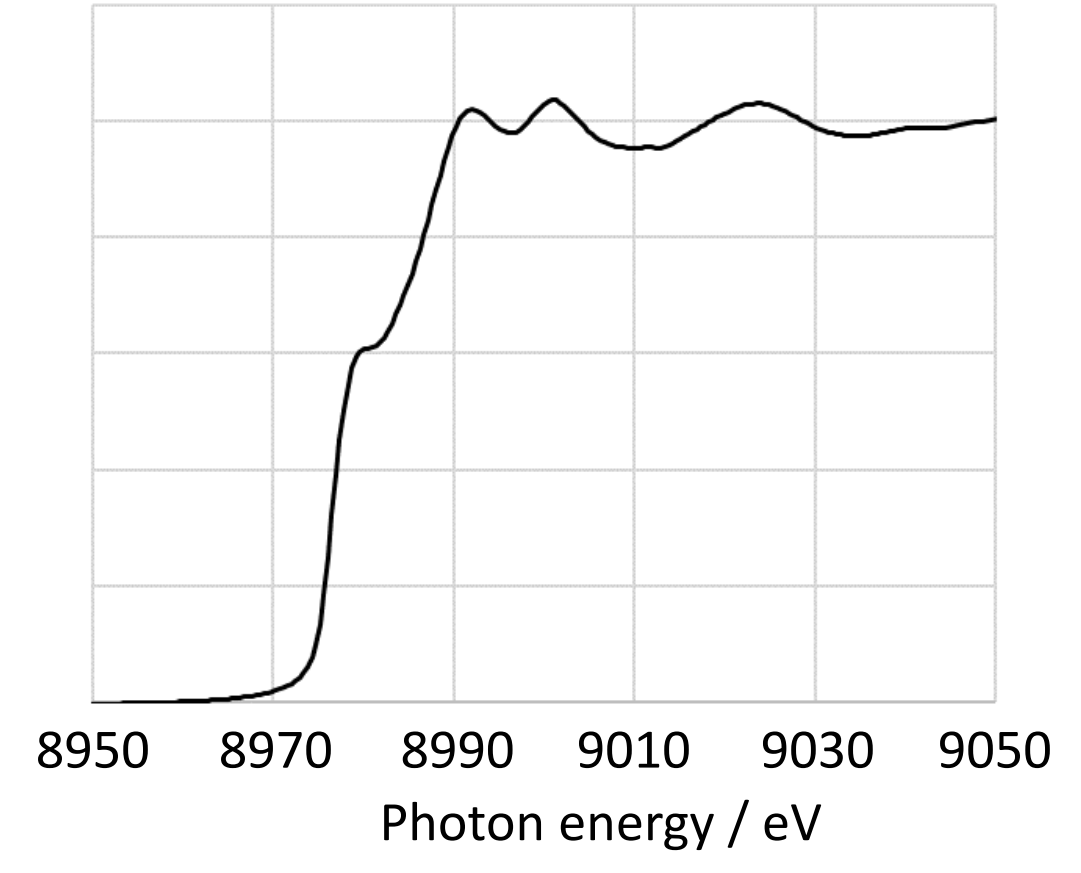BL08W XAFS INFORMATION
Experimental Techniques
- Tender X-ray XAFS
- Hard X-ray XAFS
Overview
This beamline utilizes a double-crystal monochromator to perform XAFS measurements in the tender to hard X-ray
energy range. For hard X-ray measurements, in-situ measurements are possible using a sample environment.
Usable gases are limited to harmless gases such as N2 and CO2. If users bring their own sample cell and set it up
themselves, it will be considered a standard measurement. However, if a sample cell is required, we recommend
conducting collaborative experiments with Professor Maiko Nishibori of SRIS, Tohoku University as an advanced
measurement.
"Coalition Conference's Lecture"(Japanese)
*Please note that the above lecture materials are based on information as of December 5, 2023, and some technical
details may have been updated since then.
Additionally, please be aware that advanced measurements may require time for instrument setup and alignment, which is included in the user's allocated beamtime.
Beam Characteristics
- Energy
- 2.1-13keV
- Flux
- 5.6-49x1011 cps (calculated value)
- Beam size
- Approx. 100 um (estimated value)
Hutch size
Approx. 12.5 m (optical axis direction) x 4 m (width) x 4 m (height)
Light Source and Optics
This beamline utilizes a 5-pole multipole wiggler as its light source and employs a liquid nitrogen-cooled silicon
double-crystal monochromator, providing monochromatic X-rays in the tender-to-hard X-ray energy range.
Focusing is achieved with a bent cylindrical mirror, and a double-mirror system for higher harmonic rejection is
also installed within the experimental hutch.
Experimental Station
- Experimental Equipment
-
"Tender X-ray XAFS Measurement System"
For use below approximately 4 keV
-Total Electron Yield (TEY) and Partial Fluorescence Yield (PFY) can be measured simultaneously (TEY requires the sample to be conductive. Please consider techniques such as metal deposition).
-Measurements are performed under vacuum (He gas not allowed).
- "Hard X-ray XAFS Measurement System" For use above approximately 4 keV
-Measurements are performed in air.
-Samples are typically mounted on slide mounts, but the sample geometry is not restricted.
- "Hard X-ray XAFS Measurement System" For use above approximately 4 keV
- Detector
-
-For tender X-ray fluorescence measurements: 4-element silicon drift detector (Techno AP Co., Ltd. XSDD50-04GR).
-Various ion chambers for hard X-rays (Applied Photon Technology Co., Ltd.)
-For hard X-ray fluorescence measurements: 4-element silicon drift detector (Techno AP Co., Ltd. XSDD50-04GR)
-Conversion Electron Yield (CEY) detector (Uses He gas; we have one He cylinder for this fiscal year. Obtaining He cylinders has become difficult in recent years. If the He cylinder becomes empty, this method may no longer be available. Additionally, the conversion electron yield method requires the sample to be conductive. Please consider techniques such as metal deposition for insulator materials.)
Layout

XAFS Measurement using transmission method
XAFS Measurement using Pertial Fluorescence Yield(PFY) method
XAFS Measurement using Conversion Electron Yield (CEY)
Amount of measurement time
Measurement time calculation formula
(number of pre-edge steps + XANES steps + EXAFS steps(steps*(k-number after XANES)))
* (exposure time + diffraction crystal moving time(over 1sec, defind by X-ray energy))
Measurement time calculation example
·exposure time : 0.1 sec
·diffraction crystal moving time : 1.0 sec
·wave number : K16
·XANES(~K4) steps : 250
·other steps : 30
Measurement time = ( 30 + 250 + 30 * ( K16 - K4 )) * ( 0.1 + 1.0) ⇒about 704 sec




